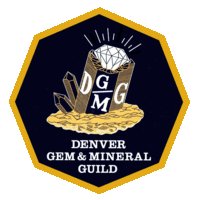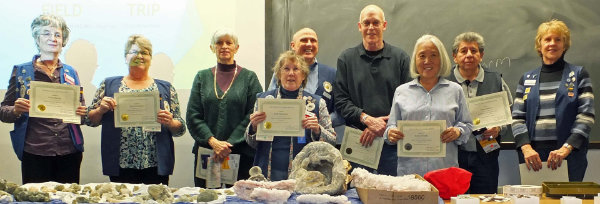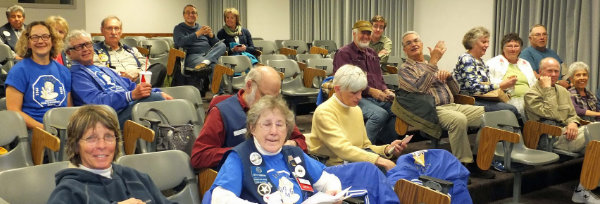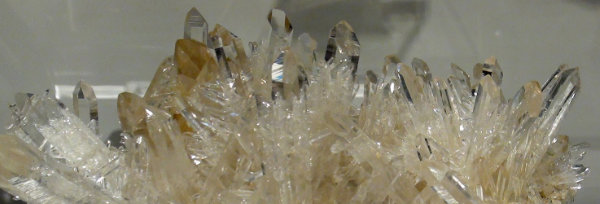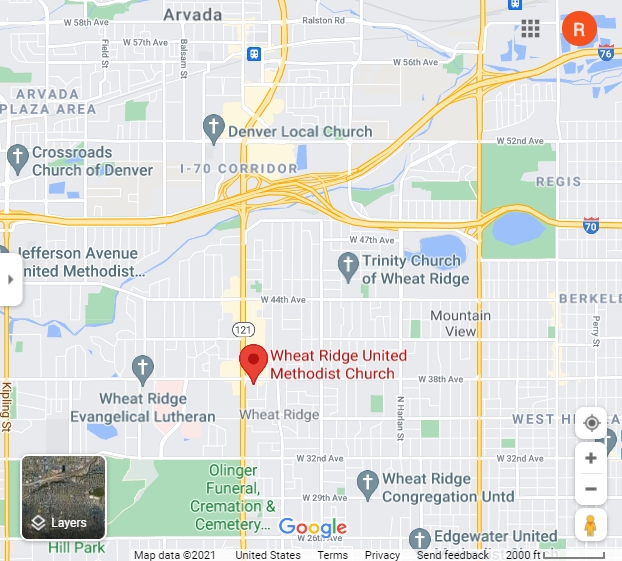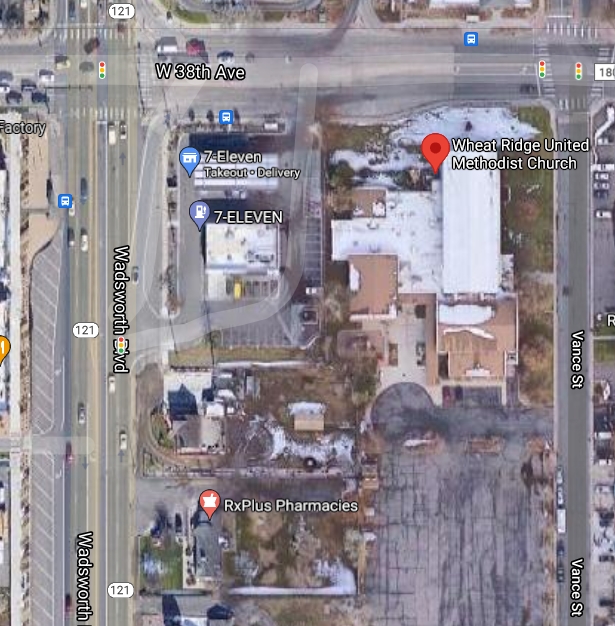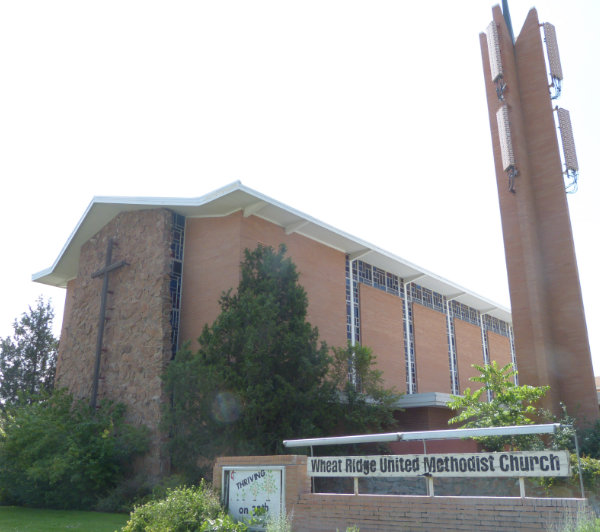Denver Gem and Mineral Guild meetings are held on the second Friday of the month (except in the summer) at the Wheat Ridge United Methodist Church,
7530 W. 38th Ave, Wheat Ridge CO.
Due to Covid (or snow) some meetings may be held via Zoom instead of live at the church. Always check the DGMG Homepage, Newsletter, and Facebook page for updates and announcements about our monthly meetings.
Board Meeting – 6:00 p.m.
General Meeting – 7:00 p.m.
Visitors Welcome!
After decades of meeting at the Colorado School of Mines, the DGMG is moving our meetings to the Wheat Ridge United Methodist Church, starting in September 2001.
The Church is conveniently located just a few blocks south of Interstate 70 and one block east of Wadsworth Boulevard. Enter the parking lot from Vance Street, 1/2 block south of 38th Ave. Enter the church from the Main Entrance at the north end of the parking lot.
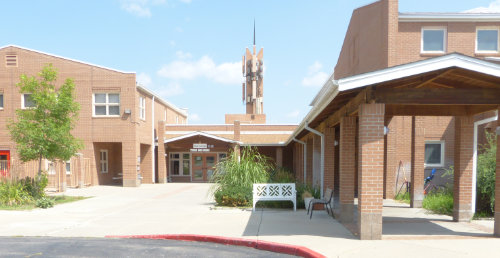

From I-70
1. Take I-70
2. Exit 269a for CO-121 S/Wadsworth Blvd
3. Turn left at Wadsworth Blvd
4. Turn left at W 38th Ave
5. Turn right onto Vance
6. Parking behind the building
From I-25 heading North
1. Take I-25 North
2. Exit 209B for W 6th Ave
3. Merge onto W 6th Ave / US-6 W toward Lakewood
4. Exit onto CO-121 N/Wadsworth Blvd
5. Turn right at W 38th Ave
6. Turn right onto Vance for parking behind the building
From I-25 heading South and I-76
1. Take I-25 South
2. Exit 216B to merge onto I-76W toward Grand Junction
3. Exit 1A for CO-121 S/ Wadsworth Blvd
4. Turn left at Wadsworth Blvd
5. Turn left at W 38th Ave
6. Turn right onto Vance for parking behind the building
Each month the club brings in speakers on a wide range of topics related to our hobby. Check this month's newsletter for details on the program for our next meeting. See below for videos from some recent programs...
Gary Curtis – Colorado Meteorites
In this presentation, Gary Curtis from the COlorado METeorite Society (COMETS) discussed the meteorites that have been found in Colorado. He also touched on meteorite parent bodies and ages, formation of the solar system, impact craters, tektites, Lunar and Martian meteorites, micrometeorites, how to find them, trends in meteorite value, and meteorite hammers (that have hit people or structures).
This talk was delivered on May 12, 2023, to the Denver Gem & Mineral Guild.
To learn more about the Colorado Meteorite Society visit http://www.peaktopeak.com/comets/
Dennis Gertenbach – Lithium: Where Does it Come From
Dennis discusses where Lithium comes from, how it is processed, and how lithium batteries work. This presentation was delivered to the Denver Gem & Mineral Guild monthly meeting on April 14th, 2023.
The presentation also included a recorded demonstration of what happens when you drop the contents of a lithium battery into water – KIDS DO NOT TRY THIS AT HOME!
Jim Profitt – Light, Color and Pretty Rocks
The variety of color within and between rock types is rooted in physical structure, physics, and chemistry, but we can get a good feeling for why light behaves the way it does without getting into high-level science. So we’ll look at the basics of the dance of energy between light’s photons and an atom’s circulating electrons (no math), why this causes color, and also explain why we can even see color. Then, it’s on to pretty rocks: what has happened to light as it bounced off, or went through that lovely specimen our lucky foot kicked up?
Jim retired from Siemens Medical Diagnostics at the Senior Staff Scientist level about 10 years ago. He started chemistry work as a medicinal chemist and moved into diagnostics, spending a lot of time working with light and color. Over the decades he has accumulated dozens of US patents with himself and others as inventor. Presently he works on invention, just because he cannot stop, using SolidWorks for 3D design and a combination of laser cutting and 3D printing to work out ideas. Recently, he has started oil painting as part of a return to art interests.
This program was delivered at the January 13, 2023 meeting of the DGMG.
You can follow Jim on the Front Range Science Connection Facebook Page.
Debbie Baldwin – Antartica Expedition
Long time Guild member Debbie Baldwin presents a program on her recent trip to Antartica.
This program was presented to the monthly DGMG meeting on November 11, 2022. This meeting was held live at our meeting place and was also made available via a Livestream on Zoom.
Brian Walko – Fluorescent Minerals
Our April Speaker was Brian Walko from the Rocky Mountain Chapter of the Fluorescent Mineral Society. He spoke on fluorescent minerals. What makes them glow? Where do you find them? What’s new in the world of UV lights and what new devices can we expect to see this year.
This meeting was held live at our meeting place and was also made available via a Livestream on Zoom.
Pete Modreski – Report From Tucson 2022
The Tuscon Gem and Mineral Show started in 1955 and is said to be the largest, oldest, and most notable gem and mineral show in the world.
The theme of the 2022 show was “The Show that Glows” (fluorescent minerals), plus “The Apatite Supergroup.” The “black light” displays, organized by the Fluorescent Mineral Society, were a big, special, and very popular part of the show. They wanted to have a sub-theme of minerals for which there could be theme displays that could showcase some “showy” minerals that did not require UV light displays in a darkened room; hence, “Apatite” was added. By making it the “Apatite Supergroup”, the display could encompass not just apatite itself, but the many very colorful related minerals such as vanadinite, mimetite, pyromorphite, and many more, hence, “The Apatite Supergroup”. Apatite was also an appropriate topic to tie to the Fluorescence theme, since apatite is a common fluorescent mineral too (in various colors!).
Utah Fieldtrip – October 2021
Hear all about Bob & Bob & Linda’s great Utah adventure. Where to camp, where to dig, and how to find “the good stuff”! Who found the best crystals? Who carried home the most rocks? Who changed the most flat tires? Which rocks glowed in the dark? Which rocks sparkled in in the light? How well did they clean up, and where are all those rocks now? Don’t miss this exciting tell-all show-all program which covers Dugway Geode Beds, Topaz Mountain, Blue Crystal Mines, and more.
This program was presented at the February 2022 meeting of the DGMG via Zoom.
Designing Around Unique Gems – Alex Reynolds
Alex Reynolds discussed the process of designing and making jewelry, using beautiful and unique gemstones, from his jewelry design studio in Old Town Fort Collins, Colorado. This will include the process from beginning to end, the tools used to accomplish this, and some interesting examples.
Alex is an Industrial Designer who is passionate about design and believes that it is the little details that really make the difference. He focuses on designing custom, one of a kind jewelry, often utilizing stones much less common than white diamonds. He was invited to present at the 2010 Design and Emotion Conference in Chicago, and won 2nd place in the Engineering Division of the Graduate Forum of Auburn University. He also spent a few years teaching design classes as a college instructor
Wyoming Jade, A Deeper Look by Craig Hazelton
Hunting Jade in Wyoming – where to look, where did it come from, how was it formed. Craig Hazelton is a jade expert in progress whose interest in jade started when local club members showed him some Wyoming Jade. “It took me a long time to find some in the jade fields”, says Craig. Since then, he has attended jade festivals, jade carving workshops, made many friends in the jade community, and entered the 2014 World Jade symposium (he won the T-shirt shown in this photo for a jade carving). Craig has a strong geologic curiosity, and is learning by taking many seminars, a college course, conversations with experts, and of course YouTube! This presentation was delivered to the November, 2021 meeting of the Denver Gem and Mineral Guild.
Jaspers! by Dave Sanchez and Beth Simmons
Everything you ever wanted to know about jasper! Where does it come from? How does it form? What causes the many colors? The latest discoveries. Stones sold as jasper that are NOT jasper. Plus some amazing tips, tricks and lapidary techniques for polishing jasper. This presentation by Dave Sanchez and Dr. Beth Simmons was given at the September 2021 meeting of the Denver Gem and Mineral Guild
Everyone in attendance that night received a bag with samples of each of the jaspers discussed. Members who missed that night can still borrow / check out those samples from the DGMG library.
Why are Minerals So Complicated – Dr. Pete Modreski
If you’ve ever tried to look up information about minerals (such as in trying to write “correct” information about a mineral for a label), you’ve probably asked yourself, “What has happened to minerals?” Didn’t they used to seem so simple? Aren’t they so very much more complicated now? I guess some of those questions most apply to those [of us] who first studied and learned about minerals “a long time ago”. If you’re fairly new to minerals… well, maybe it all seems complicated. Overly complicated? Do mineralogists just make things up to be extra confusing, just to plague the amateurs? Why are some minerals part of “families” or “groups” or (heaven help us) “supergroups”? Why do so many minerals have multiple names? And why are some commonly known minerals said “not to be proper minerals at all”?
Pete will try, in his reasonably light-hearted and entertaining way, to take us through the story of why and how we go from such “simple” minerals as quartz, pyrite, calcite, fluorite, to “more complicated” ones like turquoise, mica, feldspar, tourmaline; to the “extraordinarily complicated” minerals like… well, how about hydoxyplumbopyrochlore, or ferro-fluoro-edenite? And is that green gemmy mineral, olivine or forsterite or peridot? And is that pink, fluorescent mineral, manganocalcite or manganoan calcite or manganiferous calcite or _______?
This program was delivered (online) at the January 8 2021 monthly meeting of the Denver Gem and Mineral Guild, by the 2021 Guild Vice President – Dr. Pete Modreski.
Photogrammetry and 3D Modeling for Paleontology
Shellie Luallin from the Western Interior Paleontological Society demonstrates the use of Agisoft Metashape photogrammetry software and Sketchfab for use in Paleontology. She goes into detail about her techniques for producing 3D models of fossils, dig sites and geologic outcrops.
You can see Shellie’s work at:
https://sketchfab.com/Paleogirl
https://www.coloradostratigraphy.org/strat-chart/cretaceous-chart
https://www.cretaceousatlas.org/species/hoploscaphites-nicolletii/
3D Microscope with Focus Stacking
Basic introduction to 3D photography and a tutorial on how to take stereo pictures of tiny objects using focus stacking techniques. Professor Emeritus, Howard “Cork” Hayden, shows how to take stereo photos using an inexpensive Opti-Tekscope digital USB microscope with a custom modified mount. He goes on to give a tutorial on using Helicon Focus software to create images that are in perfect focus at every depth level. He then finishes with a tutorial on Stereo Photo Maker software that is used to perfectly align the left and right images and output them to either stereo pairs or anaglyph images which can be viewed with red/cyan 3D glasses. The video ends with a slide show of his beautiful anaglyph images. This presentation was given at the November 13th, 2020 online meeting of the Denver Gem and Mineral Guild – http://denvergem.org/
Products/links mentioned in this video include: 3D Glasses – https://www.berezin.com/3d/
Opti-TekScope – https://opti-tekscope.com/ot-hd-usb-m…
Lab Jack – https://www.amazon.com/Stainless-Stee…
Stereo Photo Maker – http://stereo.jpn.org/eng/stphmkr/
Helicon Focus Lite – https://www.heliconsoft.com/helicon-f…
GEM VILLAGE
AFMS 1st Place Award Winning Program for 2017 by Beth Simmons, Ph.D. Learn the history of America’s only Rockhound Colony.
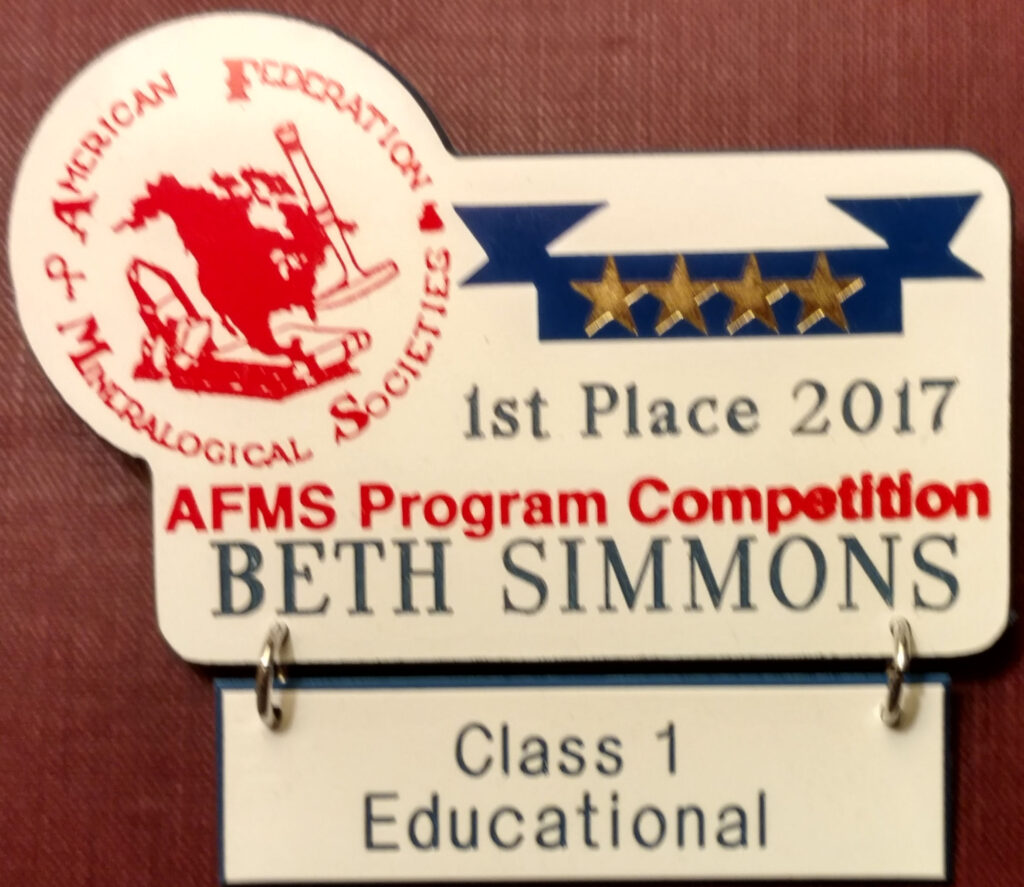
See the original
Shipley’s Mineral House Booklet
(donated by Jim Dennis)
THE IRON FURNACE AT MARSHALL 1861-1870
by Bill Reich and Beth Simmons. April 2020
The Iron Furnace at Marshall Colorado (near Boulder) produced 250 tons of iron, including the iron used to make the first (and only) cannon made in Denver (to ward off confederates). Where did the iron come from and how was it formed? Watch this video by Bill Reich and Beth Simmons to learn the story.
Some Volcanoes of Colorado
Here is the PowerPoint presentation delivered by Dr. Beth Simmons to the September 7th, 2018 meeting of the DGMG.
Learn about the largest volcanic eruption ever on Earth and the largest caldera on the face of the planet – right here in Colorado!
Click on the three vertical dots on the lower left to view in full-screen mode.
A Faceters Journey – Ron Snelling
Ron Snelling discusses his journey as a gemstone faceter. Ron does both flat faceting and concave Fantasy Cuts. Several examples of beautiful finished works by Ron and others are shown at the end of the video.
This program was delivered at the November 2015 meeting of the Denver Gem and Mineral Guild.
And check out this April 2023 story from Rock&Gem featuring Ron on How to Start Gem Cutting.
Tahosa Territory: A Colorado Front Range Family
By Beth Simmons PhD (2008)
Many families living in Colorado trace their roots back to when “Tahosa Territory” (“Land of the Mountain People”) was the name first proposed for the land now called “Colorado”. The Rutherford, Rash, Neville, Mosch, Lahnert, Bangerter, and Herald families harken back to when the South Platte River bottomlands, the Buckhorn valley west of Loveland, and the Upper Boulder Valley in Gilpin County were undeveloped land.
Focusing on the family’s myriad achievements, this 55-minute movie, “Tahosa Territory,” demonstrates the history of Colorado through the lives of the members of a family now named Mosch.
A short clip from the program presented by Brian Busse at the February 2013 DGMG meeting.
Want more? Subscribe to the DGMG YouTube Channel
Page last updated 5/23/2023
